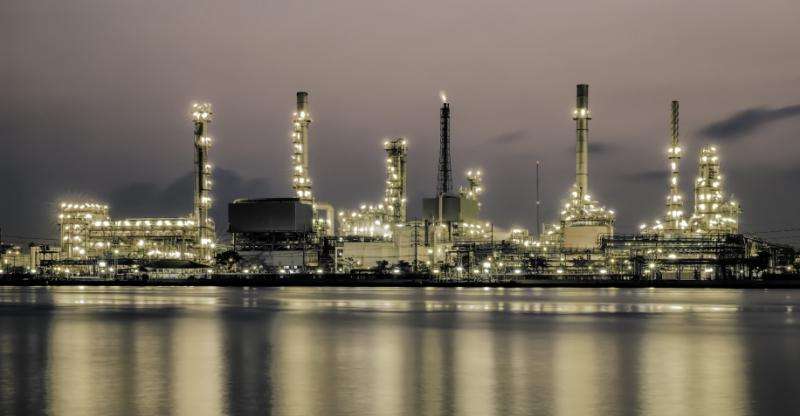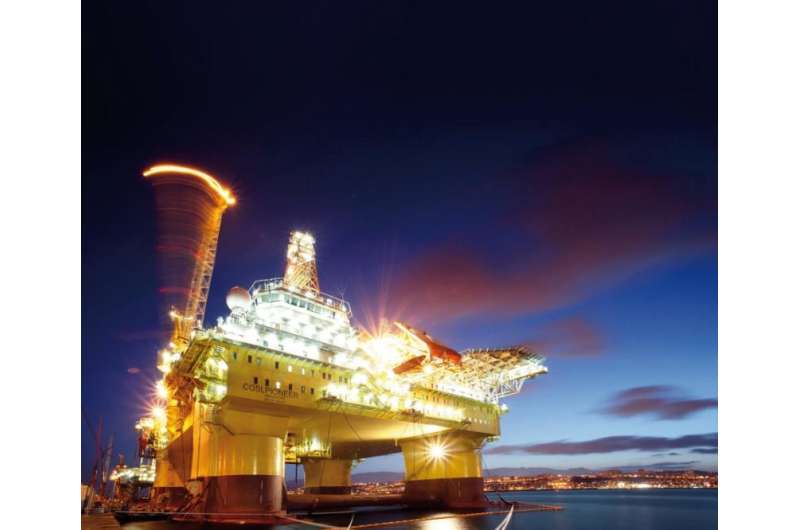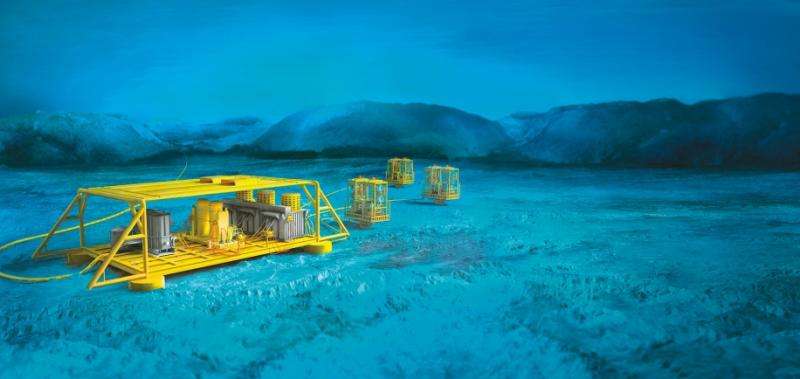Why we will still need oil and gas in the future

Worldwide, total oil demand keeps growing. Low prices are fueling this trend. To remain competitive, oil companies need to reduce their production costs. Siemens is supporting their efforts with a comprehensive portfolio of products and services for electrification, compressors and rotating equipment, automation, and digitization along the entire production chain—from oil drilling to processing in refineries.
Oil prices have plummeted in the space of just a few months. In the summer of 2014 a barrel (159 liters) of "black gold" cost over $100. In January 2016 a barrel cost less than $40.
What happened? On the one hand, more oil had reached the market; on the other, demand had decreased. It was not the first time oil prices took a hit. They have always been volatile, but even more so during the past decade, explains Lisa Davis, the member of the Siemens Managing Board who is responsible for Siemens' power businesses, in particular the oil and gas business.
The low price of oil is both a challenge and an opportunity for the industry. Well-run oil and gas (O&G) companies that are strong today are likely to emerge even stronger after prices rebound. While the availability of oil fields and the associated equipment is always paramount for them, during a slump they have every reason to also focus on cost-effective production. Often this means bringing in new technologies and further improving processes.
Tricky Tasks for Production Engineers
Siemens can help them do this. It has bought the Rolls-Royce company's aeroderivative turbine business and acquired Dresser-Rand, a leading partner in the industry. "We have a lot to offer, especially in the three areas of electrification, automation, and digitization," says Lisa Davis. "In all three, the aim is to achieve higher degrees of efficiency."

Lowering production costs is not just an imminent need of the industry. It is also a long-term trend. Most of the "easy oil" has already been extracted – oil that can be produced cheaply because it is onshore, close to the surface, and conveniently spilling out of the ground under high pressure when first tapped. In the future, oil will increasingly have to be extracted from deposits that are deep underground or offshore. Gas will have to be transported from remote locations via pipelines or as liquefied natural gas (LNG) by LNG tankers. That will be a much more tricky task for production engineers.
On the whole, it is becoming harder to produce oil and gas. But there is also good news: this needn't make oil and gas more expensive, as long as production methods are being continuously improved. In the past, technological innovations and more efficient processes have made production cost-effective under increasingly challenging conditions.
A number of trends are already taking shape:
- In the future, existing fields will operate longer and their yield will be increased by injecting water or gas, such as CO2, which boost the pressure of the reserve.
- Unconventional extraction methods such as the hydraulic fracturing of stone formations containing oil or gas (fracking) is likely to spread beyond the U.S.
- The production of heavy oil from oil sands will become more environmentally friendly and less energy-intensive.
- The global market for liquefied natural gas (LNG) will continue to grow strongly. As a result, gas that is being flared, and thus wasted, today can be used and marketed in the future.
- One day the vision of automated oil fields at the bottom of the sea, working maintenance-free over decades at depths of several thousand meters, may be realized.

At the same time, alternatives to oil and gas are becoming increasingly viable. Electric cars may become more commonplace in the future. And renewable energy sources such as wind power are becoming more economical and could partially crowd out fossil fuels. According to British Petroleum (BP), four fifths of the current growth of worldwide energy consumption is taking place in emerging economies. But even these countries' growing appetite for energy may subside at some point.
With less "easy oil" available and interesting alternatives to oil and gas becoming more viable, the way forward is clear: O&G companies need to reduce their production costs. Some are leading the way by bringing more automation to oil fields and using data analysis in smarter ways. Simply put, in the future more valves will be opened and closed by machines than by people. And it will more often be machines, not humans, that decide when to open or close the valves. Flying workers to offshore oil platforms in helicopters may one day be the exception rather than the rule.
Automated equipment produces a constant stream of data—measurement data that can be mined, aggregated into big data and transformed into smart data through intelligent analysis. And smart data helps us to understand production processes better.
For example, visualization software from Siemens is already making it possible for users to immerse themselves in a virtual 3D model of a drilling platform. In-depth virtual training sessions enable technicians to prepare themselves for maintenance assignments. This is already saving customers real money. For instance, the crew of an offshore oil processing platform in Africa was able to begin its training on a virtual model while its future workplace was still under construction. Virtual training sessions reduced the time needed for training sessions on board, and as a result the oil platform entered service two months earlier than planned.
Another opportunity to reduce costs opens up when mechanical and electrical drives become smaller and lighter in response to the scarcity of space on oil platforms and pipeline stations. Aeroderivative turbines such as those that Siemens recently took over from Rolls-Royce Energy are a good example.
Every year, five percent of capacity must be replaced
Will the price of oil remain low, possibly for years to come? No one knows. But there is one lesson that the history of the oil and gas industry has taught us: Although the price of oil can swing wildly, the growth of demand is surprisingly stable. There have been price peaks above $140 and troughs below $20, but over the long term average global energy consumption has grown steadily between one and two percent annually. In addition, roughly five percent of existing production capacity has to be replaced every year in order to offset the decreasing yield of aging oilfields. Meanwhile, new oilfields are being developed and the output of existing fields is being increased through the injection of gas.
Automation and digitalization are expected to keep oil and gas competitive in the decades ahead. Whether we like it or not, every year the human race is likely to burn a bit more oil and gas than it did the year before. In absolute numbers, our demand for energy is growing. However, the proportion of oil and gas in the total amount of energy consumed could decline.
That will probably hold true until, one day in the future, it will be more economical to leave the remaining oil in the earth's crust rather than extracting it. The necessary adjustments during this long period of transition will in any case bring great business opportunities for those who have the courage to innovate and try out new ways to produce and use oil and gas.
"When you look at the growth in consumption, it quickly becomes clear that oil and gas will remain very important for the next few decades at least," says Lisa Davis. "Of course we also need renewable energy sources. At least for the time being, we simply need everything we have. And that includes oil and gas."
Provided by Siemens


















